Basilicata is a wonderful region to visit, located in the south of Italy, sandwiched between Campania, Puglia and Calabria. Originally known as Lucania, this region is known for its mountains, hills and national parks. It is not well known to tourists, making Basilicata is one of Italy’s best-kept secrets. It has stunning ancient towns, a very rich food culture and emerging wine industry.
Our Choices from Basilicata
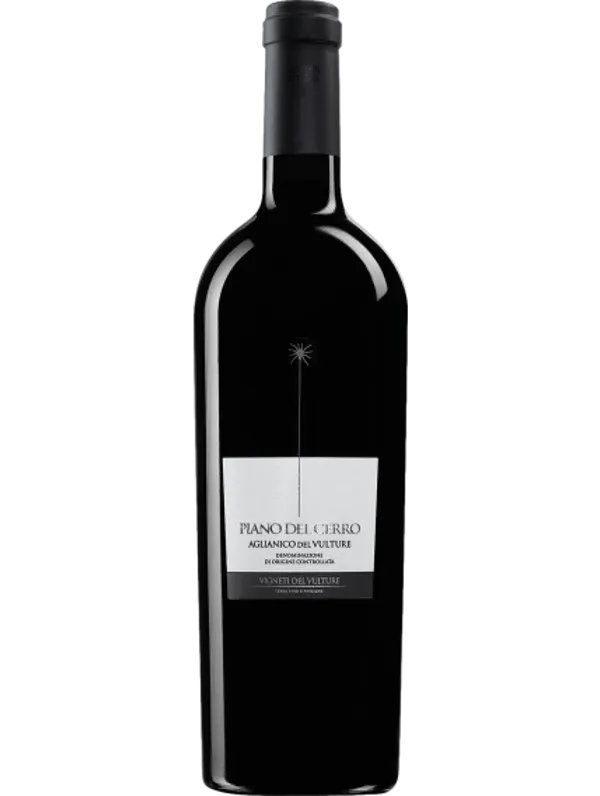
Vigneti del Vulture Piano del Cerro Aglianico
Drink now or age up to 12 years. Born on volcanic slopes in Basilicata, it offers a black fruit and pepper profile with a lasting finish.
Read more
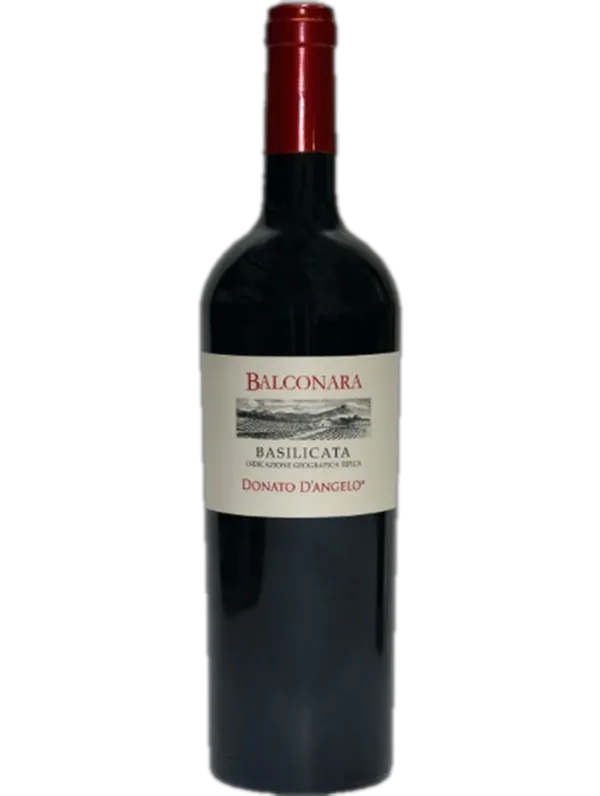
Balconara IGT Basilicata Rosso
Ruby red, featuring red cherry and plum aromas, accented by black pepper, tobacco, and spice. Dry, full-bodied, with well-balanced tannins.
Read more
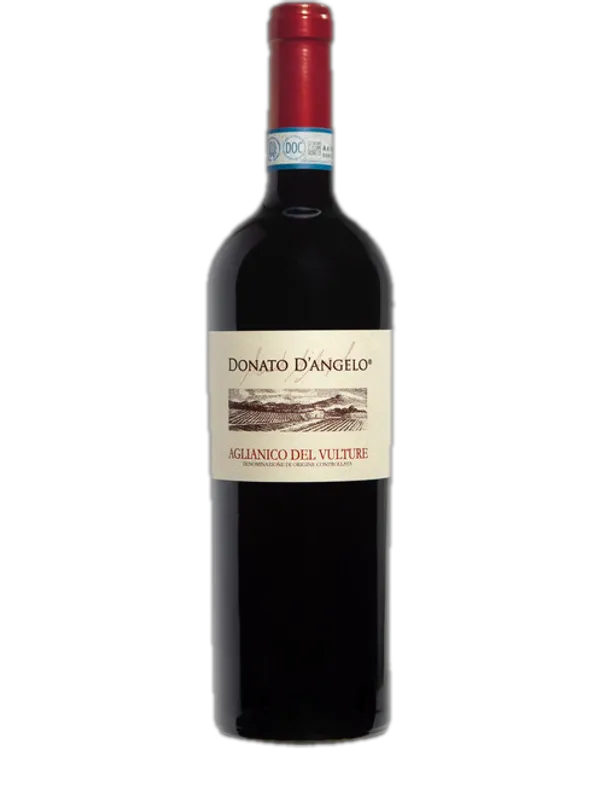
Aglianico del Vulture DOC
Garnet-tinted red. A complex aroma of cherry, black plum, and eucalyptus, enhanced by tobacco and clove. Full-bodied, with potent tannins.
Read more
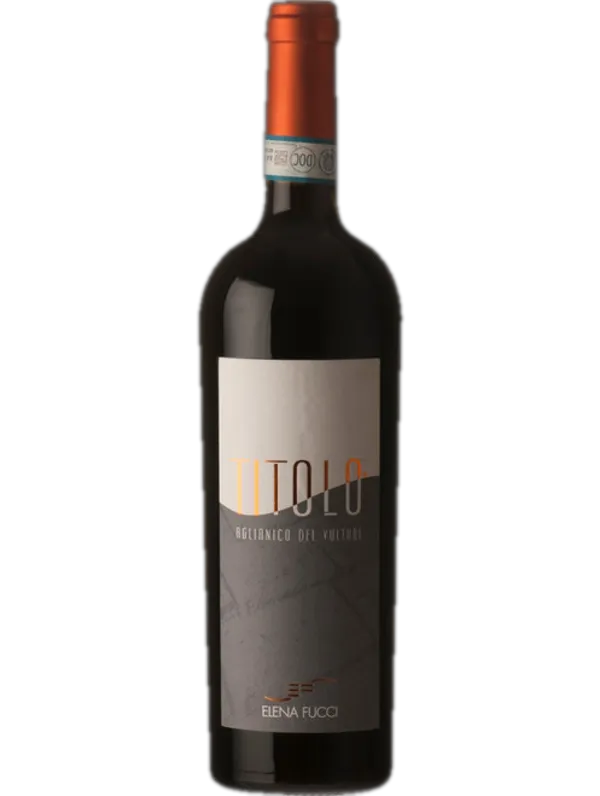
Aglianico del Vulture Titolo
A deeply colored red, showcasing a rich bouquet of cherry preserves, spices, and vanilla. Dry, full-bodied, and a long finish. A wine with potential.
Read more
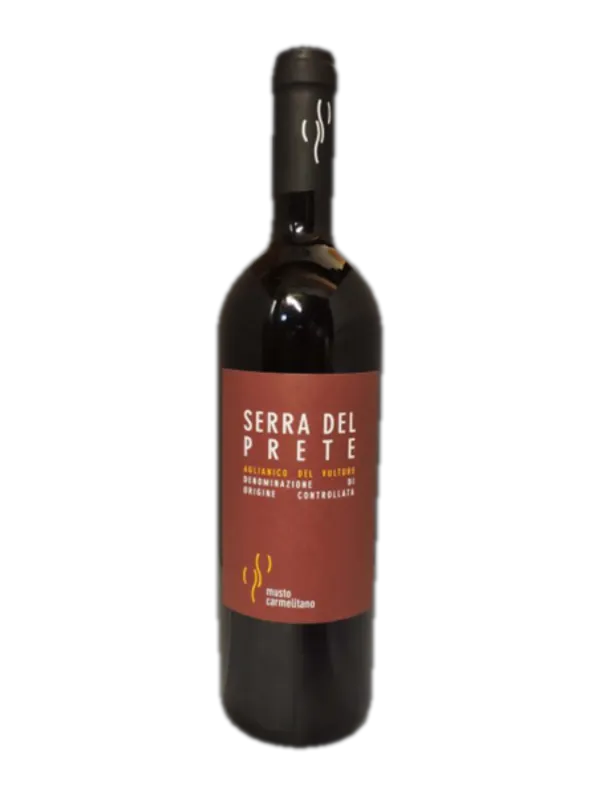
Aglianico del Vulture Serra del Prete
Ruby-red, forest-fruits, strawberry, lavender, liquorice, smooth tannins, great with red meats, cheeses.
Read more
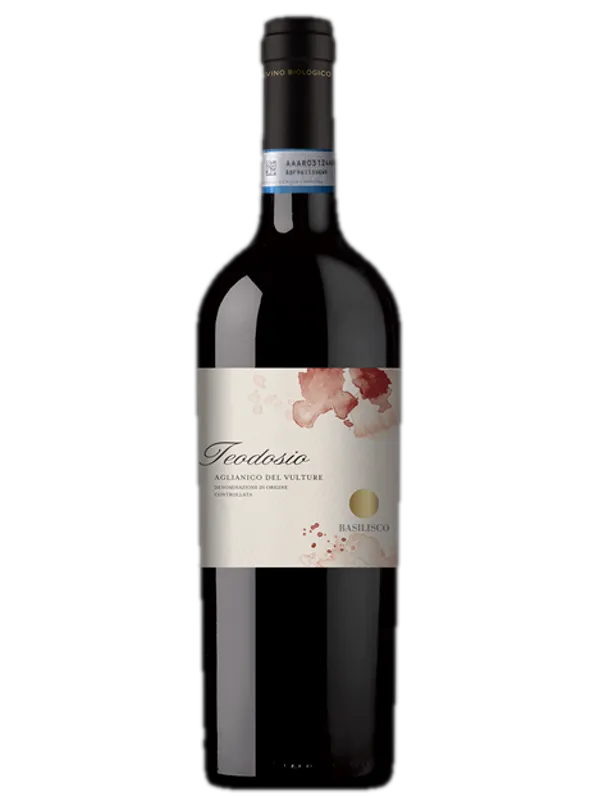
Basilisco 'Teodosio', Aglianico del Vulture
Full-bodied, concentrated, raisined plum, Morello cherry, black liquorice notes.
Read more
Basilicata's key Wine Areas
Aglianico del Vulture Superiore DOC
This area is known for Aglianico del Vulture Superiore DOC: an intense ruby red wine, tending towards garne, which is obtained from the Aglianico del Vulture grape. Aged in oak barrels, this wine provides a unique structure that pairs wonderfully with game and spicy meats.
Terre dell’Alta Val d’Agri DOC
The Terre dell’Alta Val D’Agri DOC denomination is located in the province of Potenza. The grape varieties suitable for the production of this wonderful red wine (also available as red reserve and rosé) are Merlot and Cabernet sauvignon.
Grottino di Roccanova DOC
This region is a south-eastern hilly area in the province of Potenza and is known for the production of quality red, white, and rosé wines. The red and rosé wines of this appellation are mainly produced with grapes of Sangiovese, whereas the white wines are made with Malvasia Bianca variety.
Matera DOC
It is the smallest denomination within the whole Basilicata region. It includes six different varieties of wine: Sangiovese, Aglianico, Moro di Matera and Primitivo are the reds, Greco Bianco and Malvasia Bianca di Basilicata among are the whites.
Food Parings
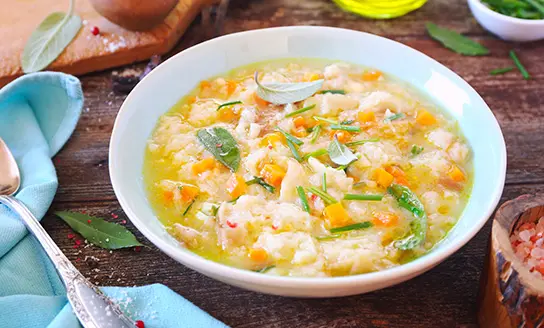
Starter: Pane Cotto
It means “cooked bread”, even if the recipe does not only contain bread but a mix of leeks, chilli pepper, egg and parsley, cooked in a pan and served on a slice of bread baked in a wood oven. It can be paired with a glass of white wine such as Greco
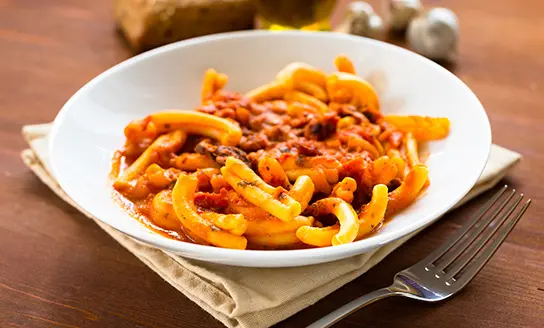
Main course: Strangolapreti Alla Potentina
“strangolapreti” is a type of pasta seasoned with pancetta, pecorino cheese in a pork sauce cooked in wine. It is a savoury main dish that goes well with a bottle of Aglianico del Vulture.
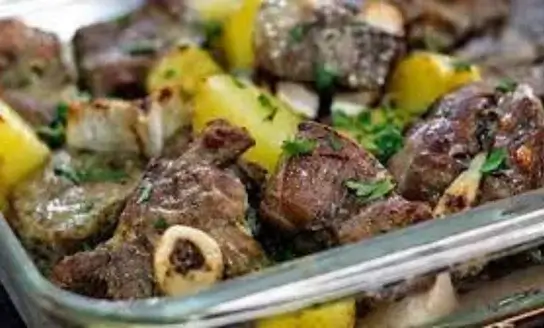
Main course: Bollito dei Pastori
it is a dish of boiled lamb combined with onions, potatoes and tomatoes. The preparation is simple and does not take too long. The ideal pairing is with a bottle of Moro or Malvasia Nera di Basilicata.
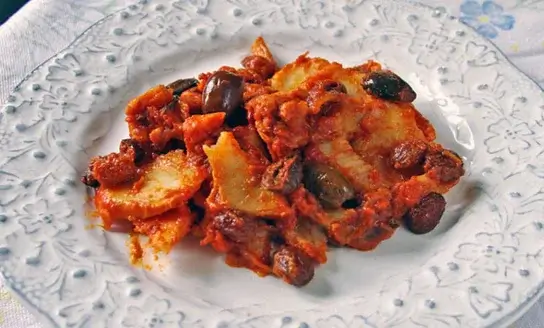
Main course: Baccalà a Ciuredda
a simple fish dish, made with fresh ingredients. The cod is cooked with onions, garlic, tomato and finished with parsley and the unavoidable chilli pepper, which is typical of Southern Italy.
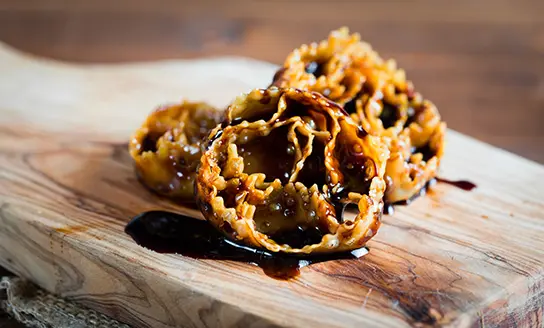
Dessert: Cartellate
an ideal way to finish your meal. Cartellate are deep-fried pastries soaked in honey. As with most local desserts, a raisin wine represents the perfect pairing. In this case, we recommend a bottle of Matera Primitivo Passito.
The cuisine of Basilicata is among the most underrated in the whole country. For starters, this region has a strong baking tradition, being one of the first places in the country where bread was originally produced. Furthermore, Balisicatans are extremely proud of their pasta: about 12 different types of fresh pasta are commonly produced here, such as orecchiette (also found in Puglia) & cavatelli.
Pasta pairs wonderfully with all the incredible fresh vegetables that grow in the region: the local climate allows for the production of tomatoes, artichokes and lots of greens all year round. Last but not least, cheese and meat are a big part of the local cuisine - write down the following: cacioricotta, soft sheep cheese similar to ricotta, and pecorino, are a must try, together with an authentic lamb dish, such as spezzatino. Basilicata is also very famous for the production of spirits such as Amaro Lucano and Nocino
FAQS
What wine is Basilicata known for?
The best-known wine of Basilicata is certainly Aglianico del Vulture which occupies 60% of the entire cultivation of grapes in the region. The Aglianico del Vulture Superiore DOCG is also very special, as it is the only DOCG in this region. Among other wines the Grottino di Roccanova DOC, Terre dell’Alta Val D’Agri DOC are also popular.
What grapes are grown in Basilicata?
Aglianico del Vulture is the most predominant grape variety present in Basilicata. It corresponds to 42% of the total production in the region. The Sangiovese grape is about 8%, while the Aglianico and Primitivo are respectively the 5% and 2% of the red wine production. White wines make only 10% of the regional production: the predominant grapes are Greco and Malvasia.
What is distinctive about Basilicata’s wines?
The red wines of this region are rich in structure with hints of red berries, spices, and liquorice. White wines, on the other hand, are sparkling and fragrant.
Which is the best time to visit Basilicata?
The best time to visit this beautiful region, its ancient towns and wonderful hilly & mountainous territory is between May and September. It’s a perfect time to go wine tasting, hiking or enjoy one of Basilicata’s wonderful beaches.
What is unique about Basilicata compared to other parts of Italy?
In Basilicata, you can find a little bit of everything. There are national parks, (such as Pollino and Gallipoli-Cognato) medieval villages, castles and, of course, a wonderful landscape of hills covered in vineyards. We suggest you visit the incredibly beautiful castles of Vulture.
There is also something for adventure-seekers: in summer we suggest trying the so-called "Flight of the Angel" between Castelmezzano and Pietrapertosa, a steel cable suspended between the tops of these two towns; in spring rafting in the Pollino park is a great idea, and in winter you can ski around Pollino (Monte Sirino being the best spot).
Want to know it all?
Basilicata: region in a nutshell
Total vineyard area:
4,000 hectares (90% red wines, 10% white wines)Number of producers:
6,000Total wine production per year:
178,000 hectolitresNumber of DOCGs:
1Number of DOCs:
4
Basilicata’s Wine History
The history of the wine in Basilicata has ancient origins. The first crops date back to the Enotri, an old civilisation who lived in southern Italy (at the time known as Enotria) between the 1300 and 1200 BC.
Today there are about eighty wineries, while twenty-five years ago there were only about ten. This enological renaissance is due to gradual expansion of small local companies. The desire to study Aglianico and to discover its extraordinary ageing capacity is another reason for the growth of wine producers in Basilicata.
Basilicata’s Viticulture
The cultivation systems of the grapes here are mainly guyot and spurred cordon, even if the historic cultivation by trees is still practised in particularly impervious areas.
The total wine-growing area of the region is about 4000 hectares, of which 47% is in mountainous territory, 45% in the hills and only 8% in the plains. Aglianico del Vulture is the main grape variety in Basilicata. It covers over 60% of the total vineyard area.
Basilicata’s Top Wineries To Visit
Elena Fucci
The cellar was recovered from the old premises under the family home and extended to host a barrel cellar by digging directly into the volcanic rock. The cellar is equipped with all the necessary equipment from harvesting to bottling and labelling.
A new cellar was recently completed, built next to the historic company body, and connected by a tunnel dug into the volcanic rock. The new structure is built according to the principles of bio-architecture using recycled and recycled materials and technologies to reduce the impacts and energy consumption to zero.
Vigne Mastrodomenico
This winery is located along the ancient road that connected Contursi to Barletta. The city of Barile is part of important Italian institutions and known nationwide as the City of Wine and the City of Oil. The cellars are dug into the volcanic tuff and are located in Barile, a small town on the eastern slopes of Mount Vulture, in Basilicata.
Terra dei Re
In this interesting cellar, they harvest at night. This is because the climatic conditions affect the characteristics of the grapes. The grape harvest from which “Aglianico del Vulture Nocte” is produced takes place in the first fortnight of November. At that time, in the Vulture area, there is an extraordinary temperature range that even reaches 20°C.
Their Aglianico del Vulture has been recognised amongst the best Italian wines by Gambero Rosso, a very well-known wine Italian magazine. A must-try!
Best white wines from Basilicata
Greco:
a variety produced in the region of Matera. Greco has intense and persistent character.
Malvasia Bianca di Basilicata:
Malvasia is intensely floral on the nose with pleasant softness on the palate.
Matera Bianco:
A Malvasia dominant wine with an intense, fruity scent and a dry, savoury flavour.
Best red wines from Basilicata
Aglianico del Vulture:
an intense red wine with a pleasantly savoury flavour, which gains balance through ageing.
Grottino di Roccanova:
a full bodied red wine, structured and intense.
Moro:
Moro is dry, full bodied and concentrated, with a balanced, mellow flavour.
Primitivo:
Primitivo is a dark fruited, full bodied, structured red wine. Malvasia Nera di Basilicata: Full bodied, tannic and intense in flavour. Made from a native grape variety.
